SAN ANGELO, TX — A unique aircraft visited San Angelo over the weekend. It was an orange Mooney painted with tiger stripes. What was it and why was it here?
Back in January 1991, the U.S. Air Force was worried about attrition from its Specialized Undergraduate Pilot Training program and published an operational requirements document soliciting aircraft manufacturers to provide 125 trainer aircraft for what was to become the primary training aircraft for its enhanced flight screening program, or EFS. The Air Force believed it could screen out — or wash out — pilot candidates in a less expensive propeller-driven airplane before the candidate arrived at a SUPT jet training course. With EFS experience, less pilot candidates would wash out of jet pilot training.
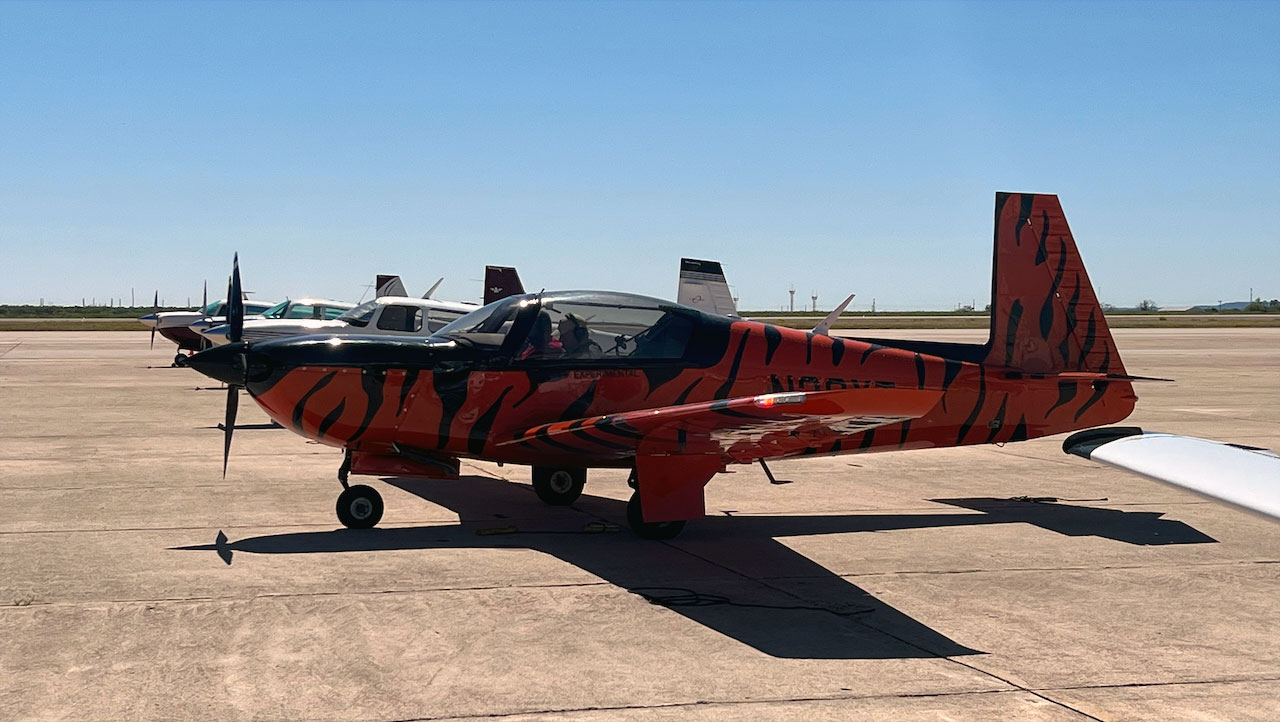
The Mooney M20T Predator looks similar to a civilian-style Mooney except for the large bubble canopy.
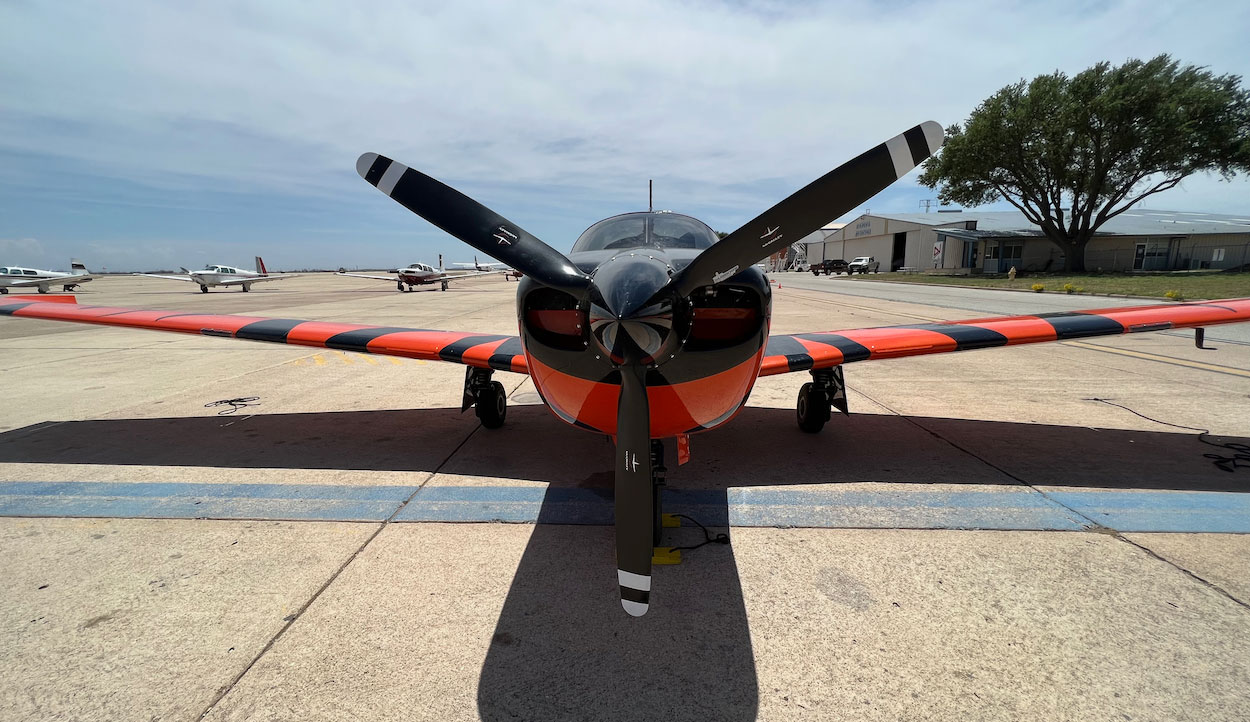
The Mooney M20T Predator: Only one was built for the 1991 competition for a next generation USAF flight screening program. It was restored this year.
The EFS was based at the South Texas Regional Airport in Hondo. Merely a 37 miles north was the Mooney Aircraft Company in Kerrville that competed to win the Air Force contract with a highly modified version of its signature Mooney M20.
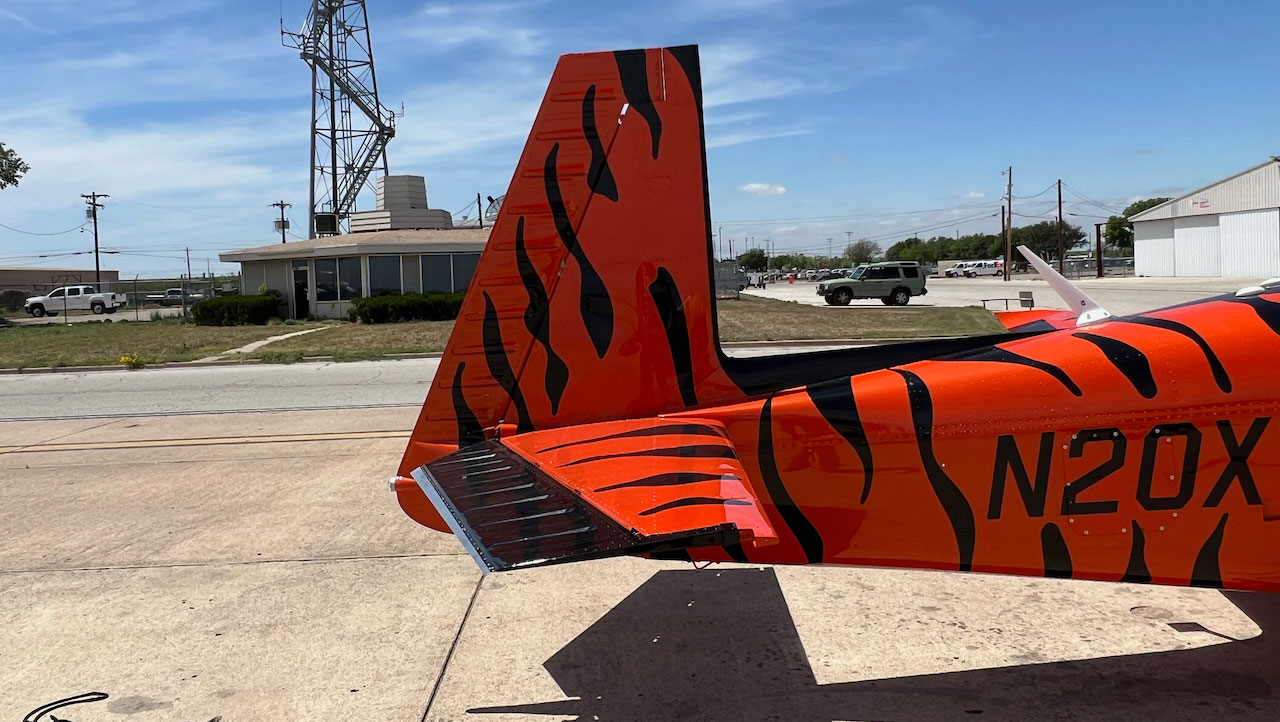
The M20T tail is slightly taller than the tail on the production civilian Mooney models. The tail design is an off-the-shelf design originally for the Mooney M20 Mustang, a pressurized version of the Mooney that was never mass produced. The Predator is not pressurized.
Mooney engineers designed a super Mooney two-seat, side-by-side seating trainer that was designated the M20T Predator as a candidate for the Air Force’s trainer. The design was efficient and cost-effective. The wings of the Predator were the same wings designed for the in-production M20K, the fast, turbocharged and popular civilian model. The fuselage was of the M20 design developed when Porsche owned Mooney and the tail is a tad bit taller than the 1990s production Mooneys, borrowing its design from the Mooney Mustang, a slightly larger variant of the M20 that featured a pressurized cabin.
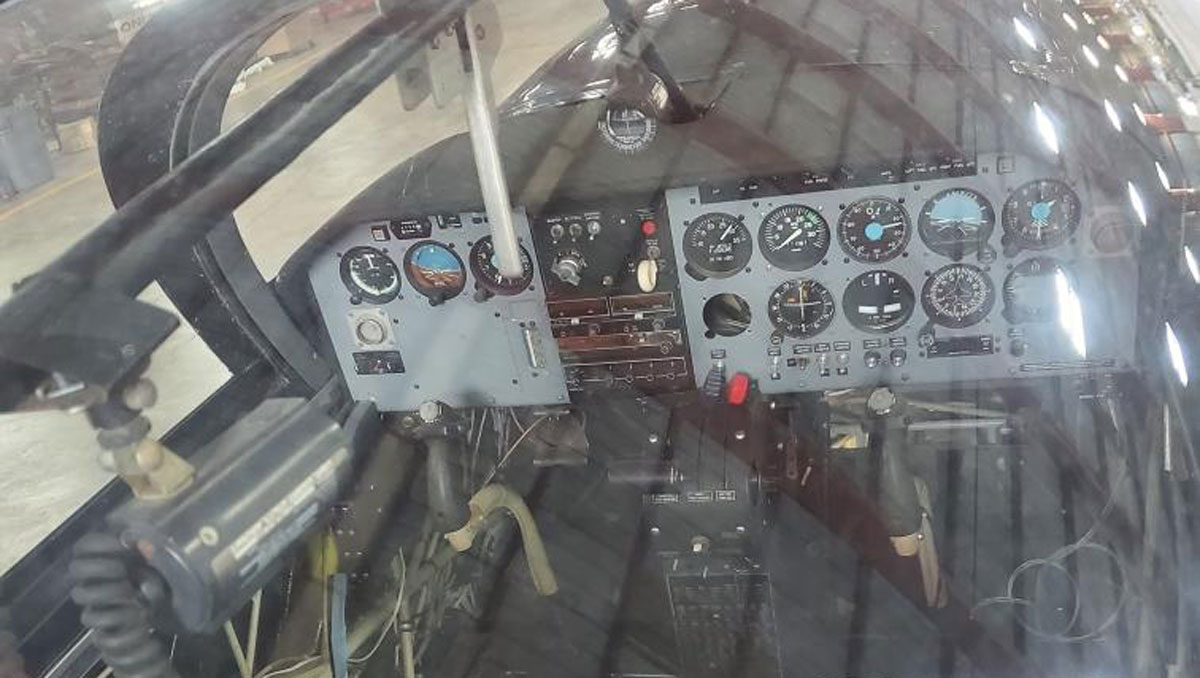
The original instrumentation of the Predator. The early 1990s instrument panel has what modern pilots call "steam gages."
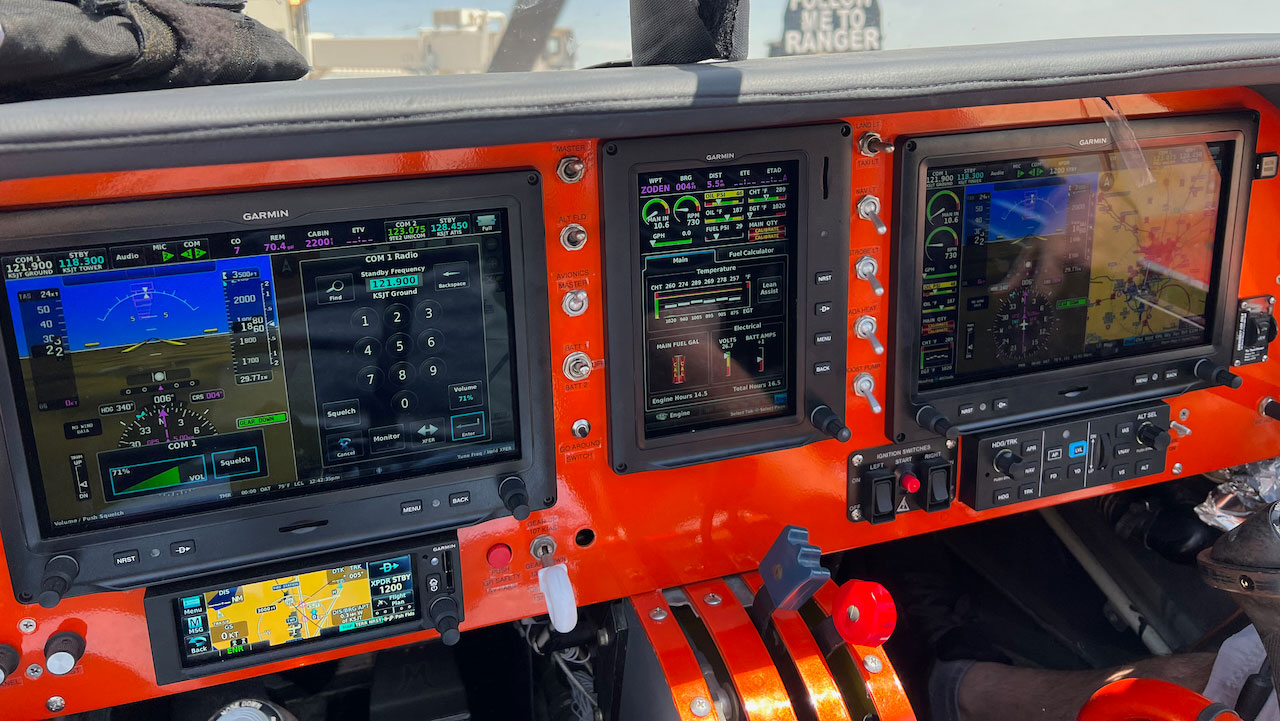
The restored M20T Predator has a Garmin glass cockpit today.
The Predator never had a chance to prove itself to the Air Force, however. In 1991, the Air Force ignored the Mooney proposal and prototype and instead chose a British company called Slingsby Aviation Limited that had the T-67 Firefly ready to ship. Only two years later, which is quick for a government aircraft procurement, Slingsby delivered the first copies of what the Air Force called the T-3A Firefly.
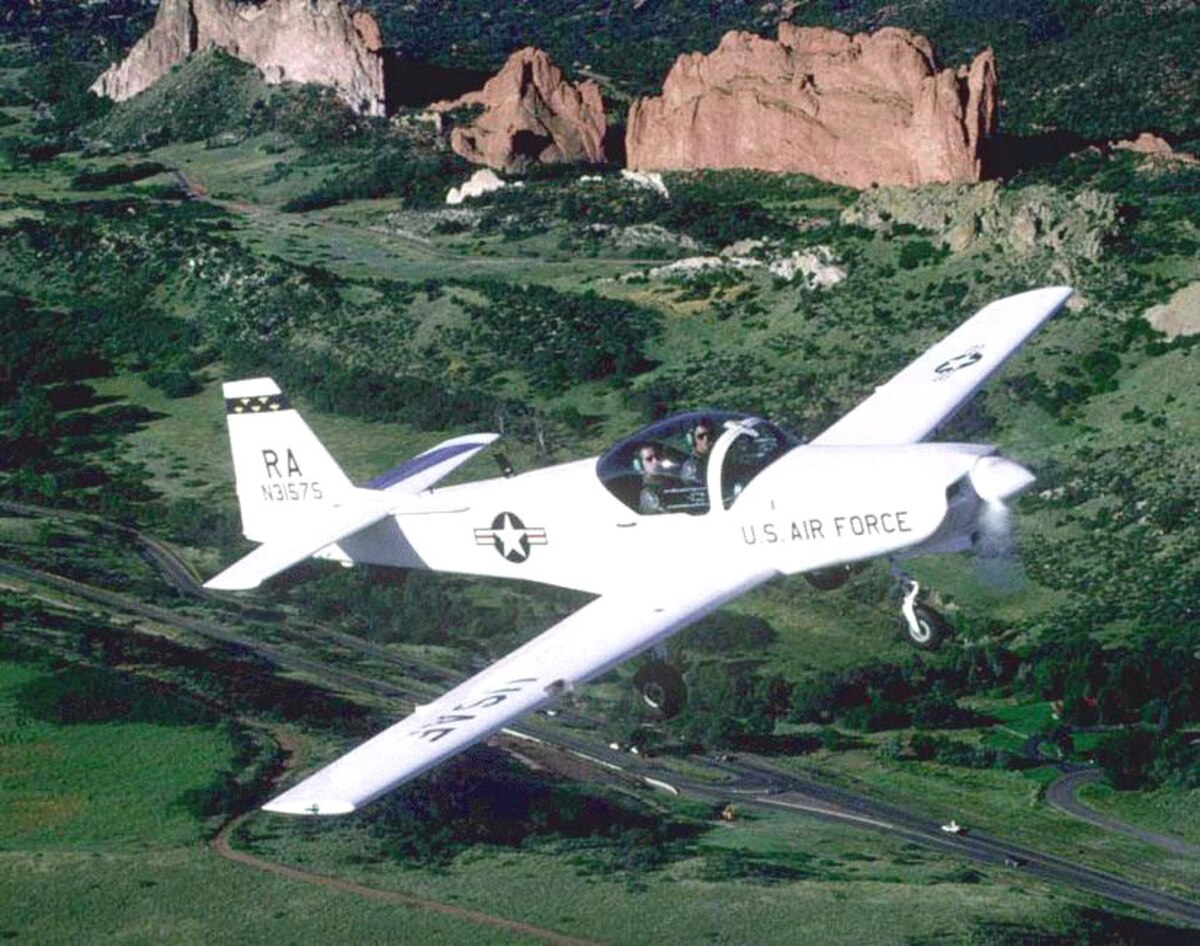
The Slingsby T-3A Firefly that the USAF eventually had to destroy in place at Hondo.
After losing the chance at a government contract, the Predator sat in various stages of disrepair in the Kerrville Mooney factory. By 2020, it was thought that the Predator could never be airworthy again if not for the efforts of Paul Maxwell. Paul is the son of well-known Mooney maintenance legend named Don Maxwell. The elder Maxwell, considered in wide circles as the patriarch of all things Mooney, founded and presides over a Mooney Service Center in Longview called Maxwell Aviation.
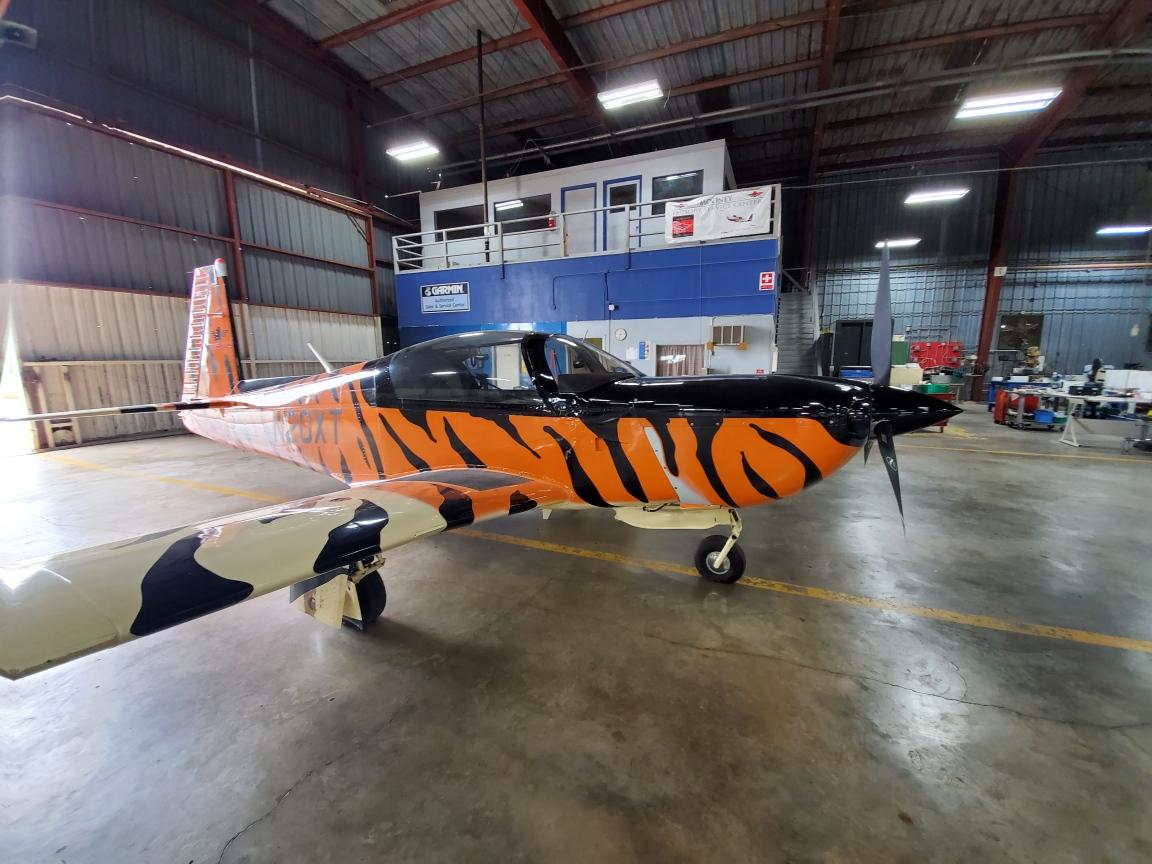
The M20T Predator as it appeared when Paul Maxwell traveled from Longview to Kerrville to pick it up in October 2020. The wings were white. After the restoration, Paul painted the entire plane orange with similar tiger stripes. He said he used photos of the original paint scheme to attempt to match as close as possible the tiger stripe placement.
The only copy of the M20T sat in pieces inside the Mooney factory for years. In the early 2000s, it was reassembled and displayed at the annual Oshkosh Airventure. Mooney at the time was making a small bet that the Air Force would take a second look at its pilot trainer as it was considering decommissioning the Firefly. If the government bought it, Mooney would also put a civilian version of the Predator onto the market. Reports at the time stated that Mooney was taking orders for the civilian version of the Predator should it be mass produced.
The USAF was licking its wounds from three fatal crashes in the EFS program that was using Mooney’s competitor’s plane. Any hope that a new Air Force contract would happen faded quickly because of this and the Predator was parked outside the Florida Air Museum on the airfield where the EAA Sun & Fun air show is held every year in Lakeland, Florida. It sat outside for about seven years before being disassembled and transported back to Kerrville.
The Maxwells told the newest owners of Mooney in 2020 that Maxwell Aviation was willing to restore the plane and get it flying again in the experimental-exhibition category.
“We really didn’t think anything would come of it,” Don said. But then in mid-2020, Mooney called.
“They said come pick it up,” Don said.
Paul said the day he picked the Predator up, it was parked and ready at the FBO across the airport from the Mooney factory but it was not airworthy. Paul and team carefully disassembled the plane for transport via trailer to Longview. It was a two-and-a-half year reconstruction process, Paul said. The engine was overhauled and the wings and fuselage were rebuilt.
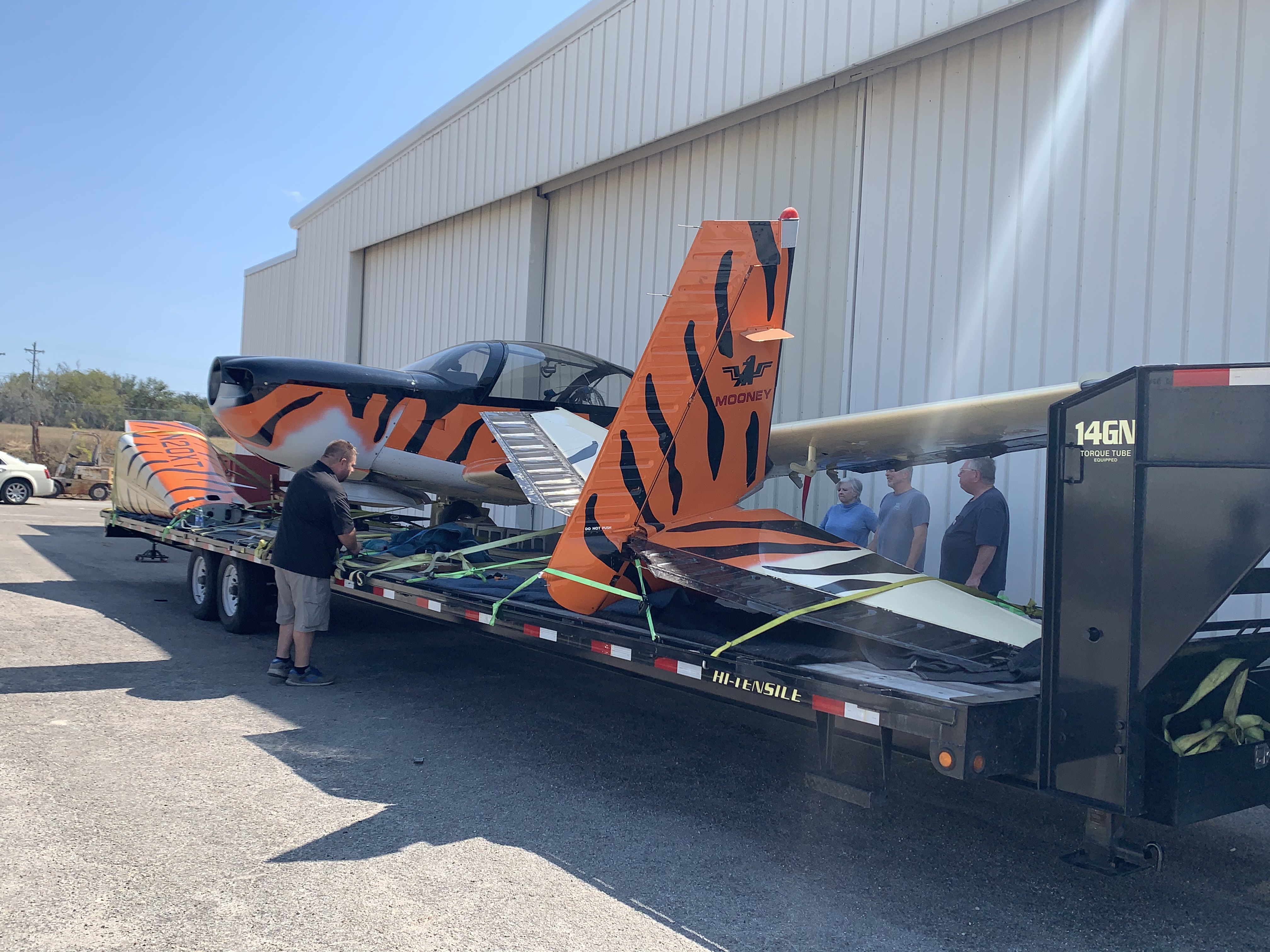
Moving the Mooney M20T Predator from Kerrville to Longview in October 2020.
“I told them to stop spending so much time on those flush mount rivots,” Don said. “It was taking so much time that I was starting to worry I wouldn’t be alive when the thing finally flew.”
Paul, who spent a few years in the U.S. Army in aviation maintenance and as a drone operator in Iraq, said working on the Predator was his pride and joy. But paying work at Maxwell Aviation sometimes took a front seat to the restoration of the Predator.
Don said he was not worried about corrosion. He said his company was prepared to fabricate new parts to make the Predator airworthy again. Mooneys are built around a steel cage and corrosion on any part of the cage can ground a Mooney forever.
“I think we are among the only Mooney shops in the world that could have taken on this project,” Don said.
Corrosion wasn’t a problem and Paul said the restoration proceeded fairly smoothly.
Paul had a full Garmin panel installed, including two G3X Touch Screens, a combined GPS navigation and ADSB transponder, and the Garmin autopilot. The cockpit’s instrument panel looks nothing close to the 1990s “six pack” with is vacuum pump-powered attitude indicators (something today’s pilots call the old “steam gages.")
The Paul and Don flew the Predator into San Angelo on Thursday evening to take part in the Texas Wing of the Mooney Caravan’s formation clinic. In all, including the Maxwells and the Predator, 30 pilots each with their own Mooney plane, trained to fly close formation and formation landings and takeoffs to prepare for the annual Mooney mass arrival at Oshkosh Airventure in Wisconsin that happens in late July.
Ranger Aviation provided the fueling and maintenance support for the Mooneys. Ranger at one time was a Mooney Service Center. In fact, during the 1970s, Mooney assembled the Mitsubishi MU-2 twin engine plane in San Angelo. Many of the components from that factory still located on the airfield are in use today where Ranger offers custom exterior painting and builds custom interiors for a variety of business-class aircraft such as the Beechcraft King Air.
The Predator is a joy to fly. It is intensely stable because the flight controls are actuated by Mooney’s signature push rods and not wire cables. The flight controls are sticks, not the traditional yokes. There is a lefthand throttle quadrant for the left and right seat pilot positions.
When leading in formation, the Predator has much more power that all of its civilian cousins. In all, 300 hp of a Lycoming normally-aspirated engine with no muffler means that we had to be mindful of leaving the wingman in the dust at full power.
Out in the air working areas north of San Angelo, I saw the Predator’s greatest benefit was the large bubble canopy. Visibility was better than I recall having in the T-37B Tweet, the primary trainer I flew when I was in USAF pilot training. In fact, the canopy, coupled with stability of the controls and the responsiveness of the large engine meant the Predator flew like a Tweet.
I saw 170 knots true airspeed with no wind and a climb rate exceeding 1500 feet per minute with its three-blade propeller.
According to local lore, the Mooney Aircraft Company changed owners a few times since the Predator was built. At one time, the new leadership of Mooney ordered the factory workers to destroy it. According to tales from retired factory workers, the Predator was carefully disassembled and its parts hidden all over the plant in the regular inventory. The workers saved it!
While the only Predator ever built was saved, the life of the T-3A Firefly that bested the Mooney Predator did not fair well at all. After three fatal crashes and a multitude of mysterious engine failures, the Air Force grounded the entire fleet. The T-3s sat for years on the tarmac at Hondo until the Air Force gave the order to destroy the planes and sell the metal for scrap.
Someone told me there is an early 2000s photograph of the Predator headed to the runway at Hondo, taxiing by the soon-to-be-scrapped T-3A Fireflies. The Predator took off and flew back to Kerrville. None of the T-3As ever touched the sky again.
Today, there is no EFS. Rather, the U.S. Air Force contracts out its flight screening program to civilian flight schools all over the country.
Subscribe to the LIVE! Daily
Required



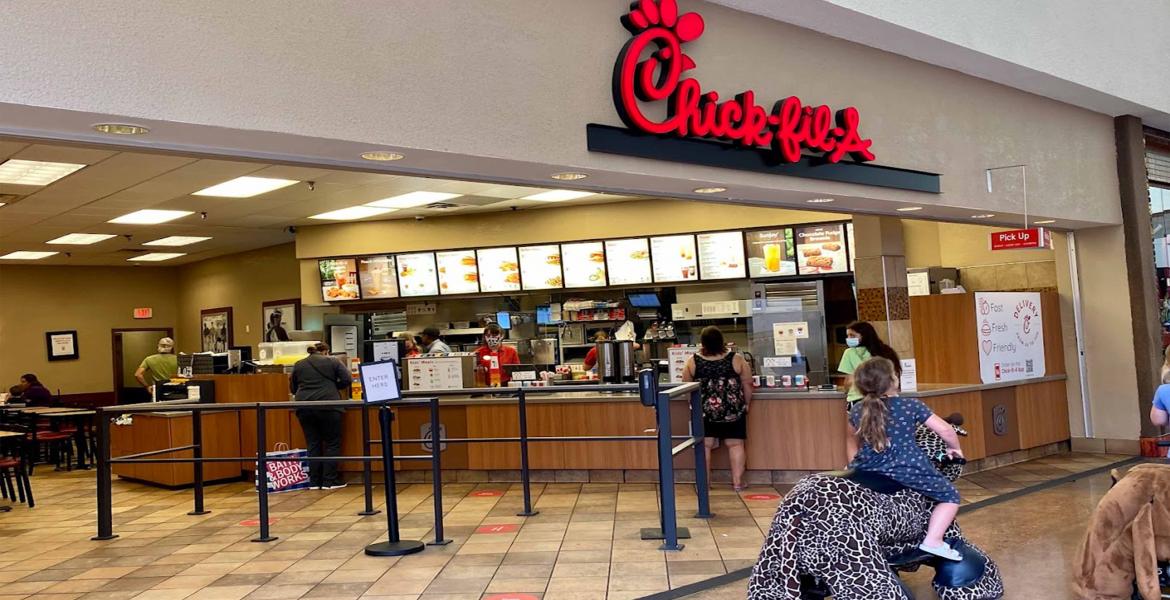
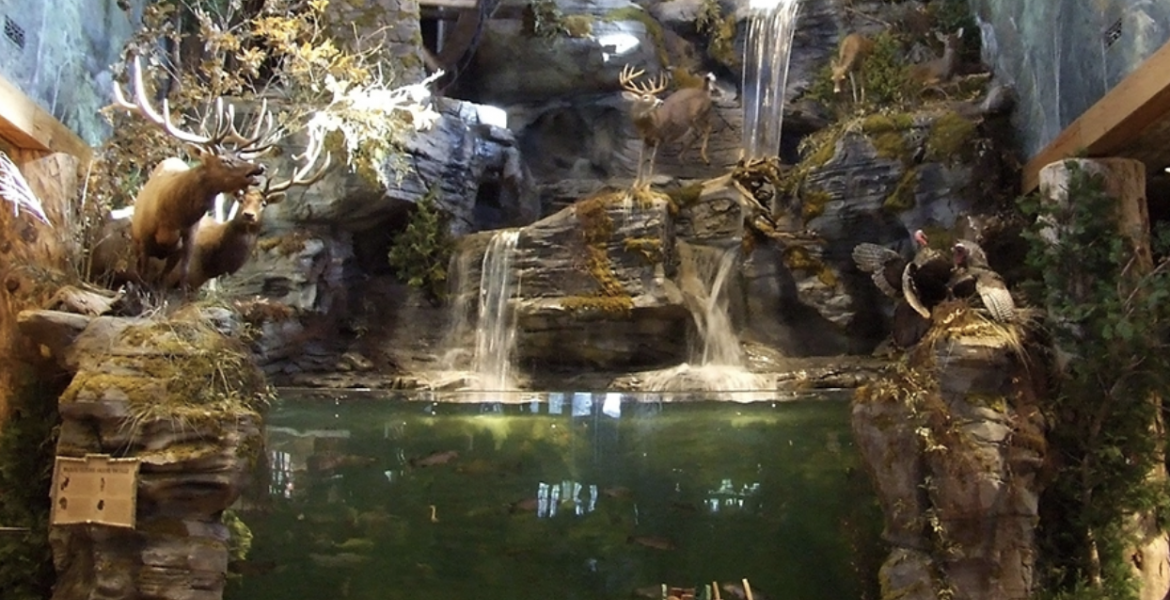

Comments
Curious to know if it left on probation like all the other predators in tom green county.
- Log in or register to post comments
PermalinkListed By: Rita Repulsa
Obviously, The Predator was promoted!
- Log in or register to post comments
PermalinkListed By: Captain Obvious
The most accurate comment I've ever seen on here.
- Log in or register to post comments
PermalinkAll the prosecutors in this county are republicans, you now know who to blame for that.
- Log in or register to post comments
PermalinkListed By: Rita Repulsa
Fortunately this is a story about how the local air force uses an old plane covered in tiger stripes called "The Predator" and not about someone blasting "Saleel Al Sawarim" (صليل الصوارم) over their aircraft radio as it makes abrupt physical contact with the Cactus Hotel.
Thank goodness...
- Log in or register to post comments
PermalinkPost a comment to this article here: